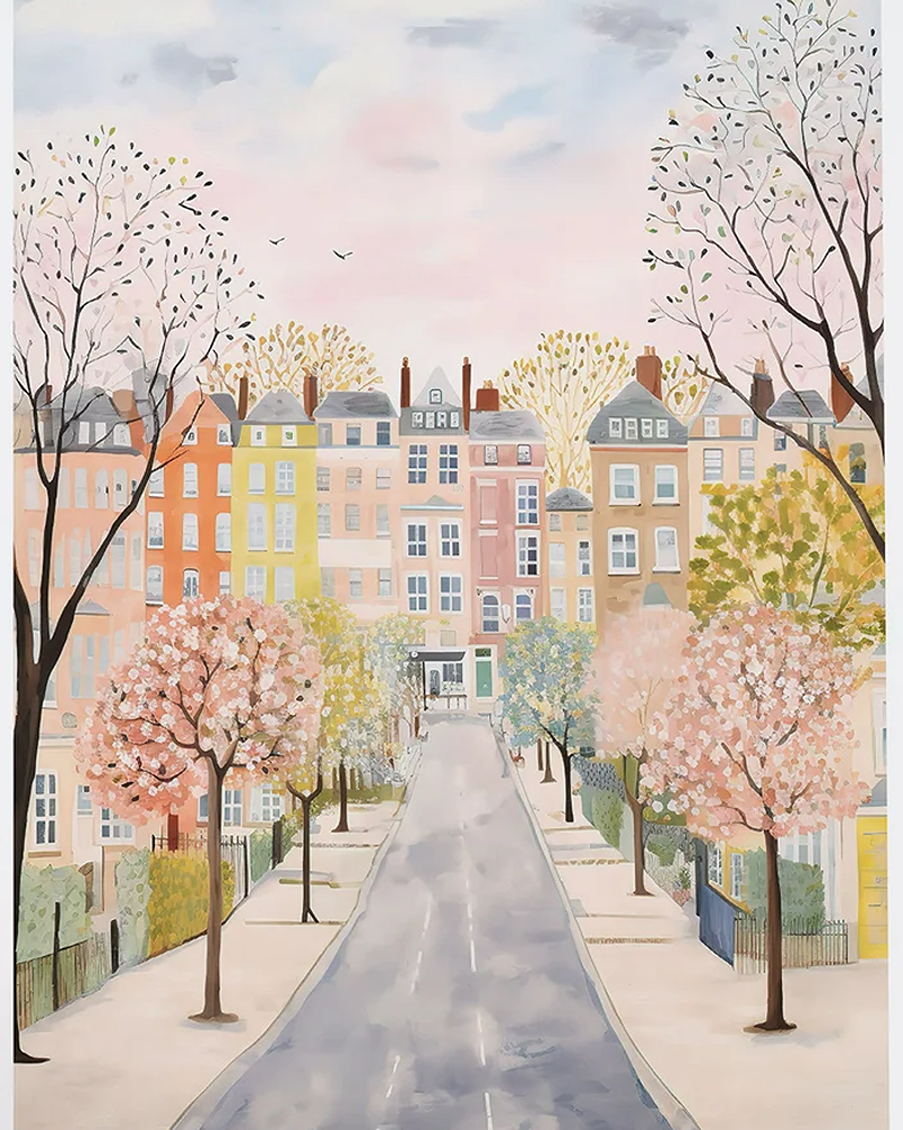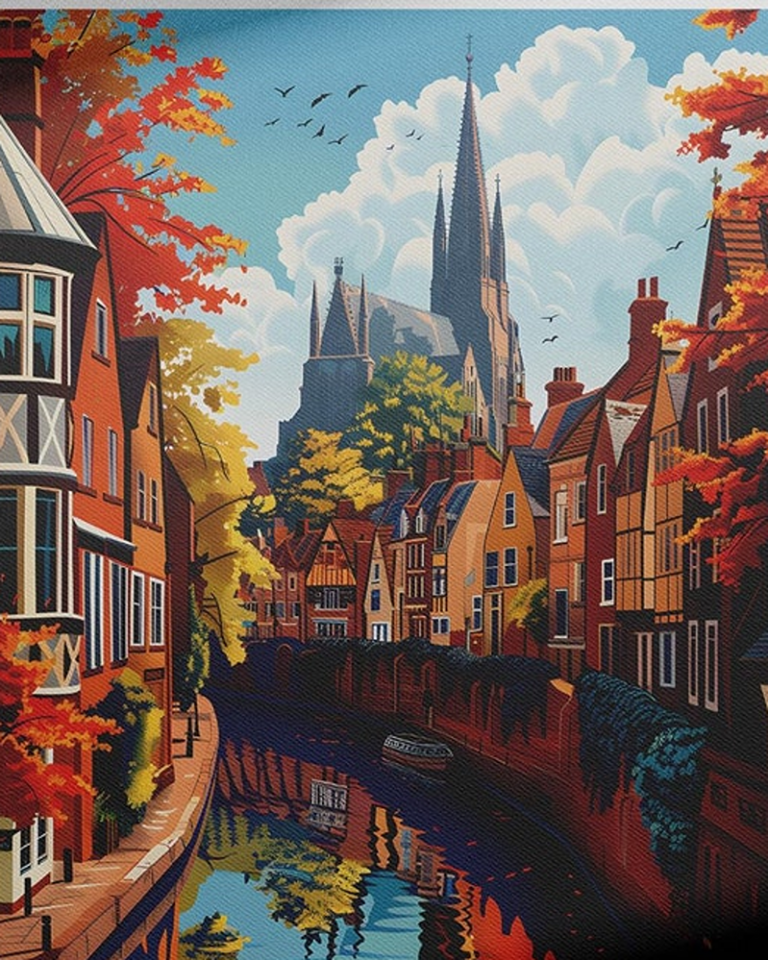
The Grenfell Tower fire in 2017 sits heavy in the memory. A blaze that raced up the cladding of a 24-storey block, taking 72 lives, showed the terrible risks that can come with tall residential buildings. It was not only a fire, it was a failure of design, materials, and systems meant to protect people in their homes.
There is a calmer path. Urban thinkers like Andres Duany have long argued for human-scale streets and buildings, often no more than four storeys. This approach does not reject density or modern living. It balances them with safety, neighbourly bonds, and practical city design (Paris and Budapest follow these rules).
Enhancing Fire Safety in Everyday Buildings
Height changes risk. In tall towers, fires spread faster across complex systems, evacuation takes longer, and firefighting becomes harder. In low-rise buildings, the risks are easier to manage and the response can be quicker and simpler.
Grenfell showed how combustible cladding on a tall block can turn a single flat fire into a building-wide disaster. The combination of height, external materials, and internal layouts accelerated spread. In smaller buildings, the same failure would likely have been contained floor by floor, not amplified by 20 storeys above.
Low-rise blocks make evacuation more practical. People can exit using stairs without facing a long descent. Firefighters can reach top floors with standard ladders and hose lines, and they do not need complex access systems. These basics matter under stress.
Materials and detailing also work better at this scale. A four-storey limit favours simple, robust systems, with proven fire-stopping between floors and walls, and fewer points where cladding or cavities can carry flames. Planning is easier, inspection is clearer, and maintenance is less complex.
New urbanism adds design sense to safety practice. Streets with short buildings provide multiple routes for emergency access, clear front doors, and visible stairs. The building itself helps responders, rather than fighting them with height.
Lessons from the Grenfell Tower Fire
Grenfell was a 24-storey tower in West London. The fire started in a kitchen (not the owner’s fault, it was due to a faulty appliance, London Fire Brigade have since launched the Total Recalls campaign, asking for a ban on plastic-backed white goods (like chip fat fryers, these are one of the main causes of fires in the UK). The fire ran up aluminium composite cladding and through gaps in barriers.
The public inquiry set out measures to prevent repeat disasters. It called for a ban on combustible cladding on high-rise homes, better testing of materials, clear evacuation plans, and stronger resident voice in safety decisions. It stressed that building control and oversight must be rigorous.
A four-storey limit would not have fixed every failure. It would, however, have reduced the speed and reach of spread, allowed quicker escape, and made rescue simpler. Shorter height narrows the margin for error.
Easier Evacuation and Quicker Response Times
Four storeys is a distance most people can manage by stairs in under two minutes. That matters when lifts fail, smoke thickens, and alarms sound in the night. Parents can carry a child, people can carry their pets, an older neighbour can be guided down, and help can come up at the same time.
Firefighters can work efficiently at this height. Standard ladders reach four or five storeys. Hoses can be charged quickly. Equipment can be hauled upstairs without long delays. Commanders can see and control the scene from street level.
A jet from a ladder hits the flames from outside, while a second team enters the stairwell. The fire is contained, and people go back to safe homes.
Building Tighter Communities
Andres Duany and other new urbanists champion places that feel made for people, not for machines. Streets with active ground floors, front doors that meet the pavement, and buildings of a walkable height. Four storeys is the sweet spot.
At this scale, you see faces and read body language. You nod to the shopkeeper, wave to a neighbour on a balcony, and check on the older resident who sits by the window. It is simple, human contact, and it builds trust.
Shorter buildings are also kinder to the mind. Views are believable and noise feels local. Research into housing and mental health links social contact and green access with lower stress and fewer symptoms of depression. Low-rise blocks make it easy to include pocket parks, shared courtyards, and safe play spaces.
Energy use also benefits. Four-storey buildings tend to have compact floor plates and simple services. They are easier to insulate well, to ventilate naturally, and to cool without heavy systems. Stairs are used more often, lifts less so.
Mixed-use design ties it all together. Shops and cafés at street level, homes above, and small offices on corners. People move on foot, choose local trips over long drives, and share the same public spaces.
Avoiding big glass skyscrapers also helps to prevent bird strike (flying into windows). Birds get confused by glass, especially if there are plants behind the glass. Instead, don’t face plants to the outdoors, and turn off lights when not in use (also use task lights and blinds at night).
Andres’ Vision for Walkable Neighbourhoods
Duany’s work, from Seaside in Florida to many town codes worldwide, shows the strength of modest height. Buildings of up to four storeys line narrow streets, with porches and balconies that invite people to walk, pause and meet.
This vision adapts well to England. Think simple terraces with corner shops, small squares with markets, and mid-rise blocks that hold a mix of flats and maisonettes. Keep the height low, and the street becomes a living room, not a thoroughfare.
Boosting Social Bonds and Mental Wellbeing
Tall towers often isolate. People come and go without contact, lifts replace stair chats, and public space gets lost. Four-storey buildings keep life at eye level.
- You recognise people, share small talk, and look out for each other.
- Courtyards and small playgrounds create safe places to play and sit.
- Gentle density: Enough homes to support local shops.
Studies on housing and wellbeing point to the same outcome. Low-rise areas often show lower loneliness and better mental health than high-rise estates. The scale supports routines that keep people connected and active.
Paris: The Charm of Human-Scale Heights

Paris, shaped by Baron Haussmann in the 19th century, set height rules that kept most buildings at five to six storeys with uniform cornice lines. The city feels consistent and legible, with wide boulevards and generous trees.
Most historic streets sit at five storeys, sometimes six, with mansard roofs and aligned façades. The height keeps sunlight in courtyards and on pavements, and it limits wind tunnels between blocks.
The benefits reach daily life. Fresh air moves through streets, people walk comfortably, and cafés thrive. Views of the Eiffel Tower, Sacré-Cœur, and the dome of Les Invalides remain part of daily routes, not hidden by skyscrapers.
Budapest: Vibrant Life in Low-Rise Districts

In Hungary, buildings are not allowed to be more than just over 300 feet (around the height of Big Ben). This means it’s free from ugly tower blocks and skyscrapers. After the Second World War, Hungary rebuilt with care for historic streets and façades. Early rules focused on cornice lines and street widths.
Public protests in the 2000s sharpened the tone. Campaigns against tall towers near the Danube and around heritage districts led councils to block several proposals.






